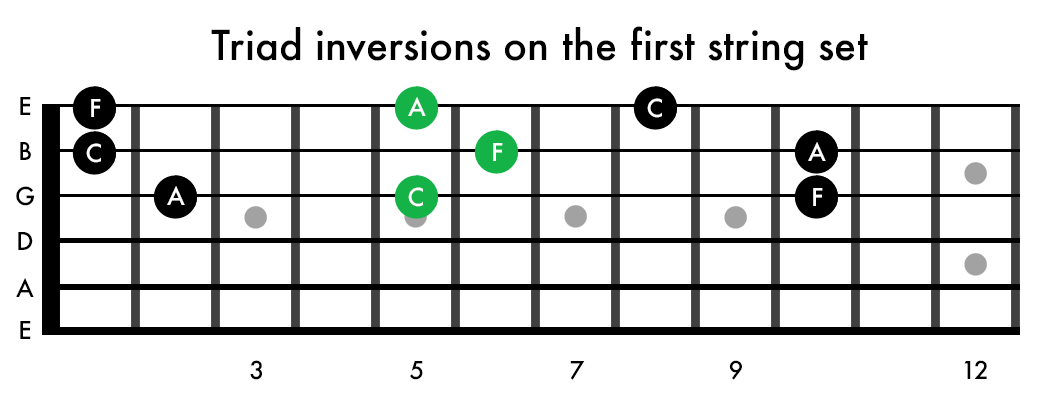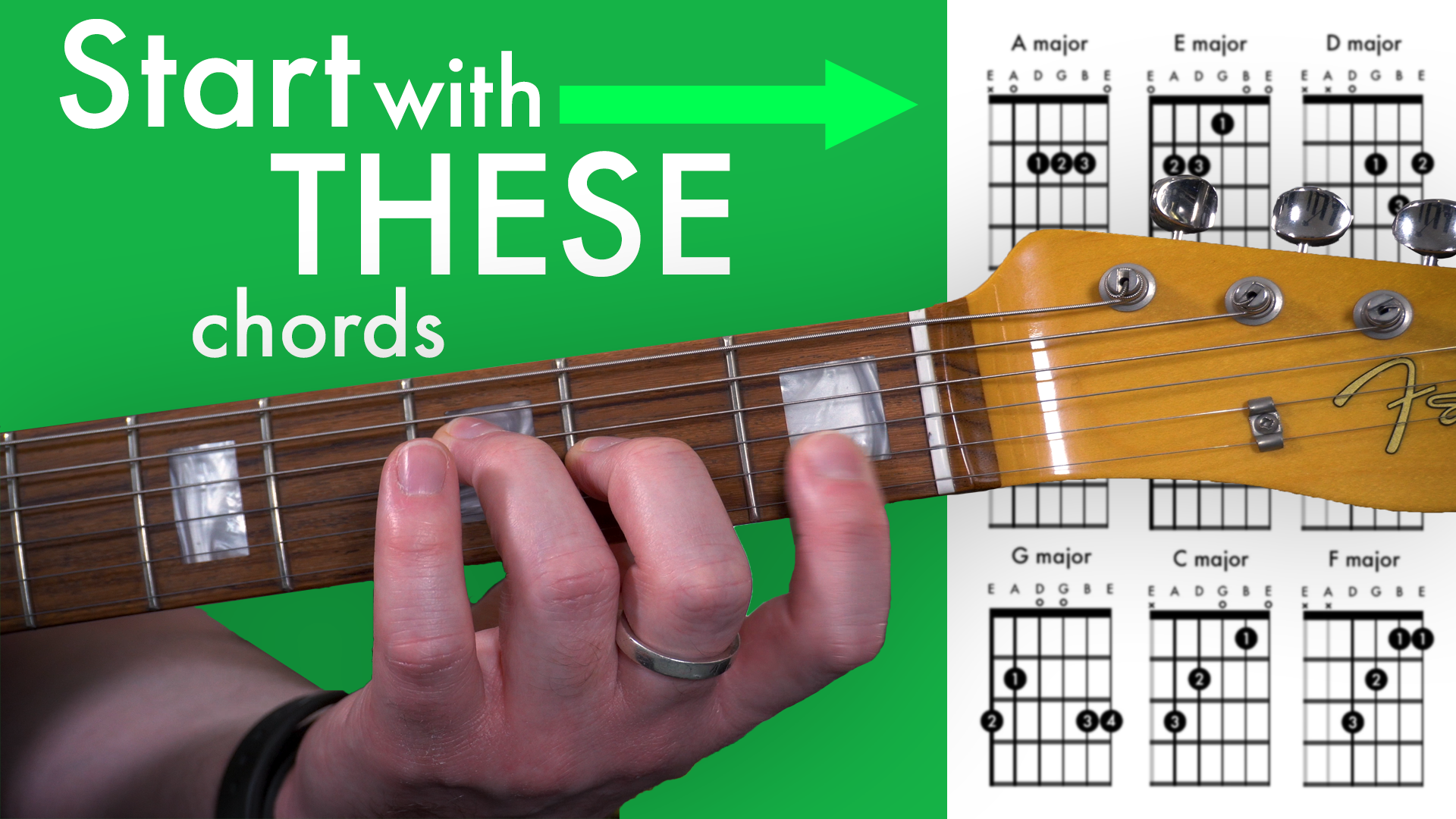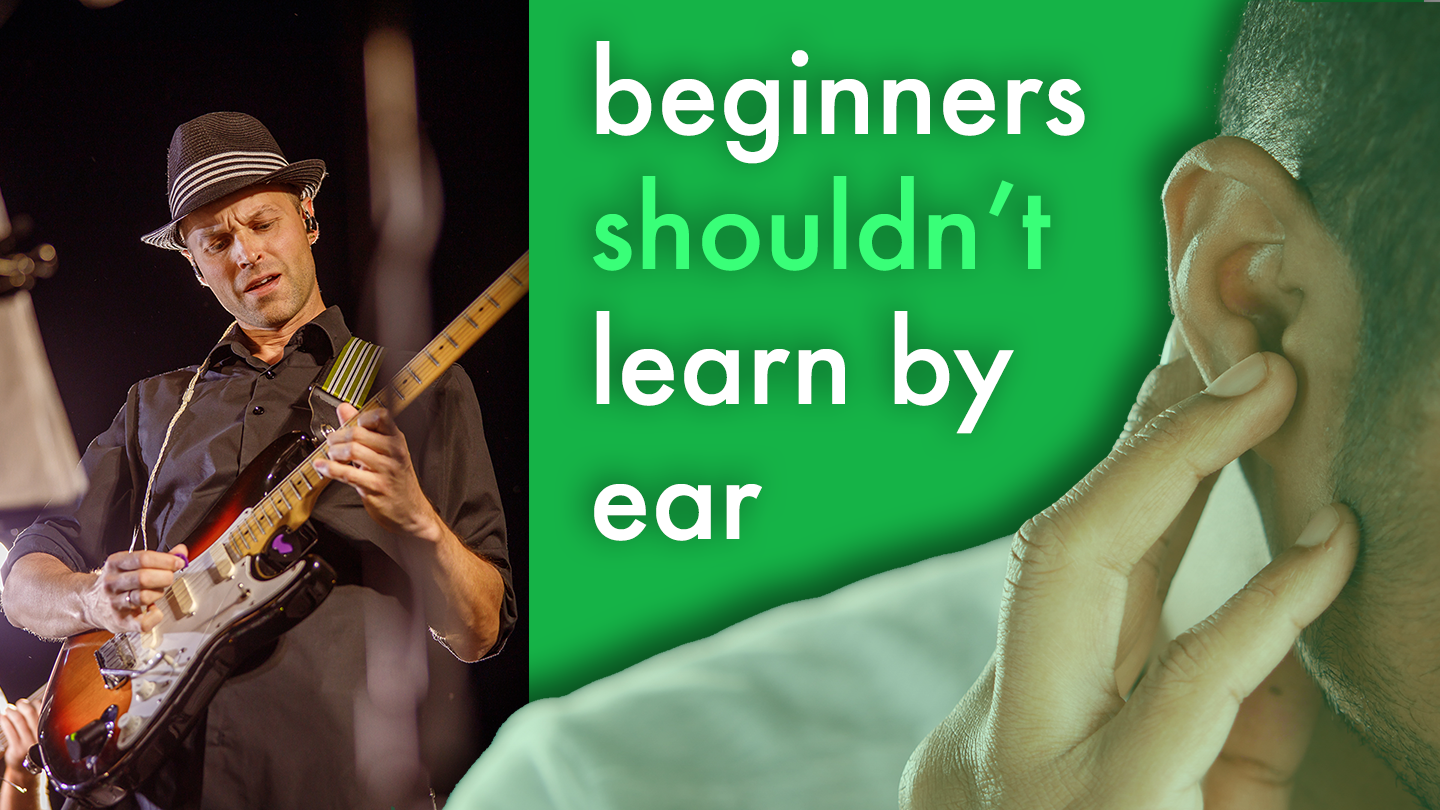What is a chord?
Beginner Guitar Essentials Lesson 1
This series of lessons will set you up for success on the guitar. You’ll learn what to focus on as a beginner, what to ignore, and how to structure your practice so you can start using what you’re learning to play songs as quickly as possible!
Chord shapes vs. chords
When a guitarist talks about playing chords they are often referring to the chord shapes we play with the left hand.
I’ve seen many beginner guitar players make the mistake of thinking that these physical positions we put our hands in are the actual chords. However, the shapes themselves are not the actual chords.
Fig. 1: G major chord with note names annotated.
A chord is a collection of three or more different notes played simultaneously.
When we play a G major chord on the guitar, we are not playing a G major chord because of the particular shape we’re making with our fingers, but because the shape we are making with our fingers allows us to play the three notes (G B D) that, when combined together, make up a G major chord.
Often a chord shape will double up notes. We only need three notes (G B D) to form a G major chord, but the open G major chord shape gives us three instances of G, two of D, and one of B. This is why we end up playing a chord shape that covers six strings even though it is made up of just three unique notes.
The G chord is the combination of the three notes (G B D); the G chord is not the physical shape we play with our hands. We could play these three notes wherever we like across the fretboard and we would still call it a G chord.
As a beginner guitar player, you’ll most likely find yourself playing open chords. This is a fantastic way to start learning the guitar and there’s no need to get ahead ourselves with the expectation that we have to understand advanced concepts. However, we do want to make sure that we develop a correct (but basic) understanding of what we are actually doing. That way we won’t confuse ourselves by learning ‘half concepts’ or developing the wrong idea about what things are and why. In the future, we’ll simply be able to build on the knowledge we already have; strengthening our understanding of music and how to play the guitar.
Fig. 2: Three examples of an F major chord (which is made up of the notes F, A, and C) played in different locations across the fretboard. Diagram from our course The Musician’s Guide to Fretboard Memorisation.
Enjoying the lessons?
This series of lessons is test footage from the first part of our upcoming beginner guitar course. These lessons are all from the first of 10 sections that will help you form a rock-solid foundation when you’re starting out as a beginner guitar player.
If you’ve got any feedback on the material, please leave a comment. I’d love to hear what you think!
And, if you want to be one of the first to hear when the new course drops, make sure you’re signed up for the Guitar Nutrition newsletter.
In the next part of this lesson series, you’ll learn about the three things we need to make sure we’re doing in order to play good-sound chords on the guitar!





A guitarist who has learned all the notes on the fretboard: Can more effectively learn scales and chords; Has a better understanding of keys, intervals, and scale degrees; Is able to more easily memorise songs; Has a greater capacity to understand music theory; Is more effectively able to develop their aural skills; Gets ‘lost’ far less frequently when they are improvising on the guitar.